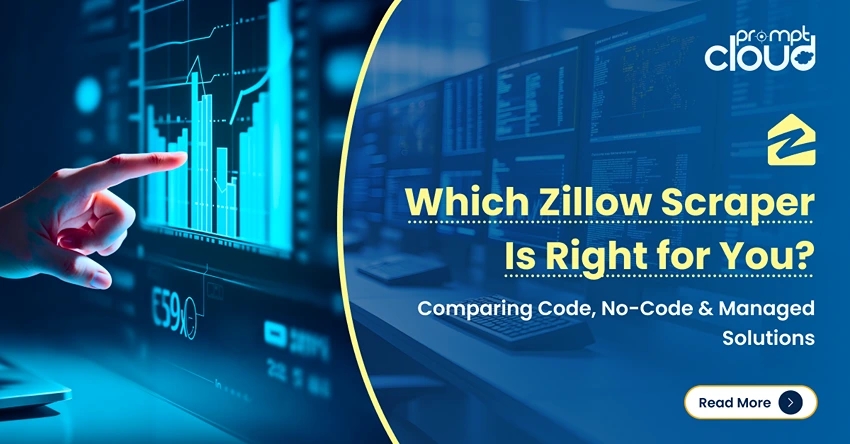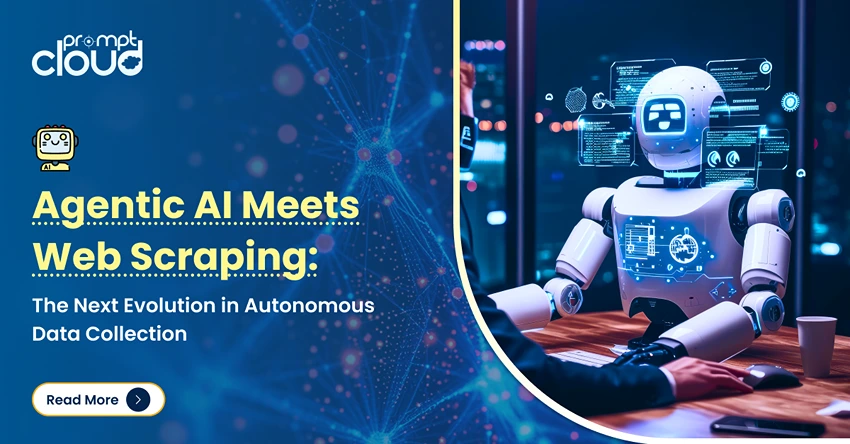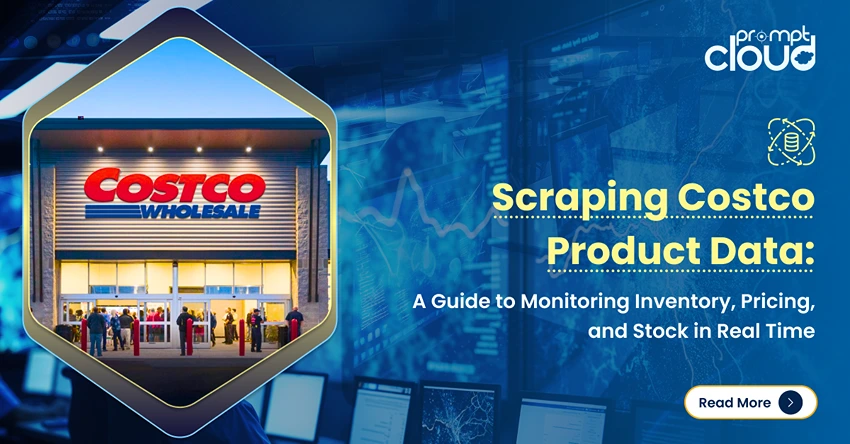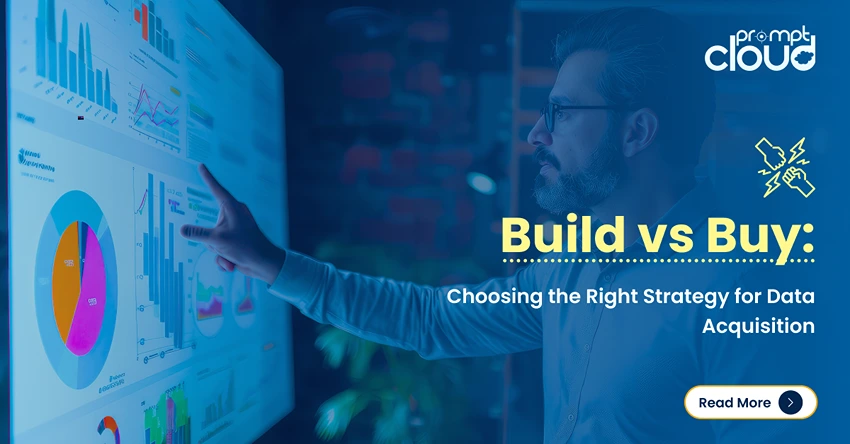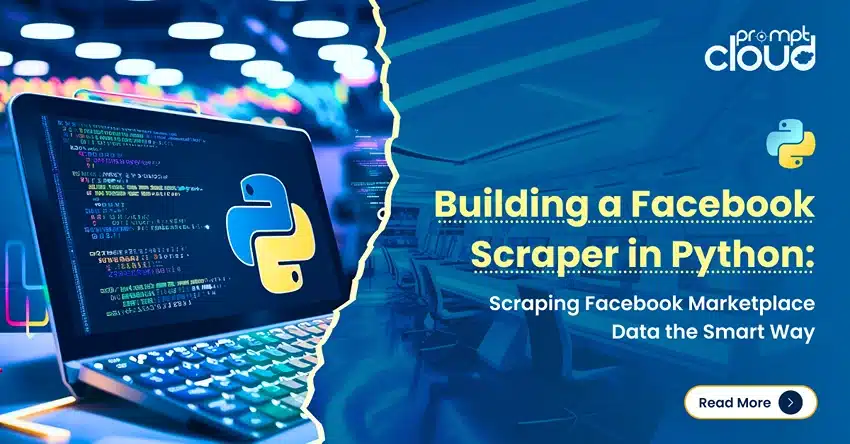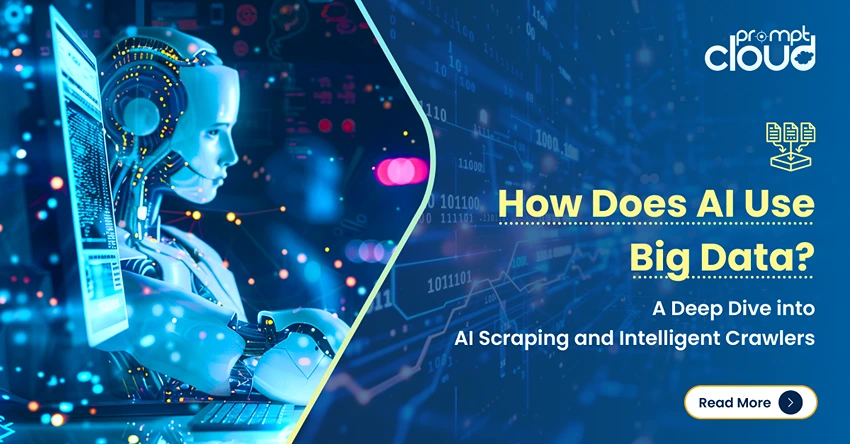
**TL;DR** AI needs data the way cars need fuel; without it, nothing runs. And not just any data, we’re talking big data. Mountains of it. In this article, we break down how AI utilizes all that data to learn, make decisions, and power tools like smart web scraping tools and intelligent website crawlers. You’ll see how businesses are using AI scraping to pull useful info from across the web, everything from product prices to customer reviews, and how companies like PromptCloud make this possible at scale. If you’ve ever wondered how AI and big data come together in the real world, this is your guide.
Why the Relationship Between Big Data and AI Matters More Than Ever
Let’s start with the obvious: there’s a lot of data out there.
More than 328 million terabytes of data are created each day. Now imagine trying to make sense of even a tiny fraction of that by hand. Not possible, right? This is exactly where AI and big data work their magic.
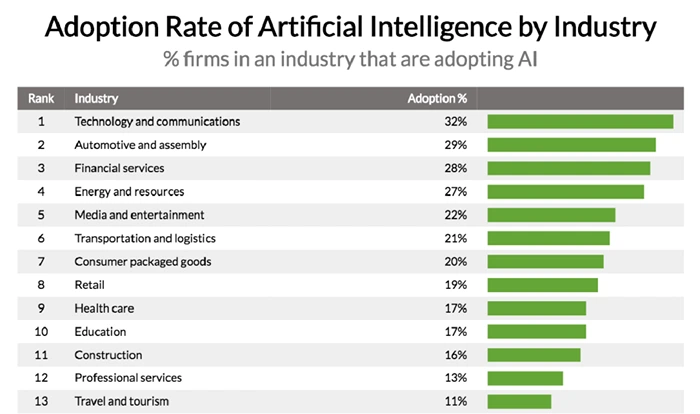
Image Source: Researchgate
When we talk about big data AI, we’re talking about artificial intelligence systems that are trained on huge volumes of data to make predictions, automate tasks, or find patterns. But how does AI actually use this data? And more specifically, how does this play out in the world of web scraping and intelligent website crawlers?
In this deep dive, we’re going to explore how AI tools are transforming the way businesses collect and understand data from the web. Whether it’s an ecommerce brand tracking competitor prices or a finance team monitoring real-time stock news, AI-driven data scraping is doing the heavy lifting behind the scenes.
And for those wondering, yes, this is exactly the kind of tech we specialize in at PromptCloud.
How Does AI Use Big Data to Learn and Get Smarter?
Artificial intelligence is not an omniscient entity that simply knows everything. It learns in a step-by-step fashion, much the same way a student grows over time. The engine that powers that learning? You guessed it: enormous amounts of data.
Picture big data as a sprawling ocean of information: website traffic logs, consumer reviews, product prices, tweets, news stories, weather statistics, stock trends; the list goes on. Now think of an AI model as a quick surfer gliding atop that sea, studying ripples, spotting patterns, and deciding when to shift direction. That partnership between AI and big data is what transforms raw data into useful insight.
Here’s how the process actually plays out (minus the jargon):
It All Starts With Data
AI doesn’t work off a gut feeling. It needs examples. Tons of them. If you’re building an AI model to, say, recognize what a trending product looks like online, you have to feed it thousands (often millions) of data points. That could be price drops, search spikes, product descriptions, reviews, you get the picture.
That’s where big data comes in. The more diverse and detailed the data, the better AI can spot patterns and make sense of what’s going on.
From Raw Chaos to Meaningful Patterns
Let’s be honest, most data on the internet isn’t neat. Web pages are messy. Formats vary. One site puts the price at the top, and another hides it behind a tab. Reviews can be sarcastic, short, or full-on rants.
AI steps in here like a digital detective. It picks through all the noise and starts recognizing patterns. Maybe it sees that every time a certain type of sneaker goes on sale, it sells out in two days. Or that people get grumpy in reviews whenever shipping takes more than a week. It connects those dots across massive volumes of messy, unstructured content.
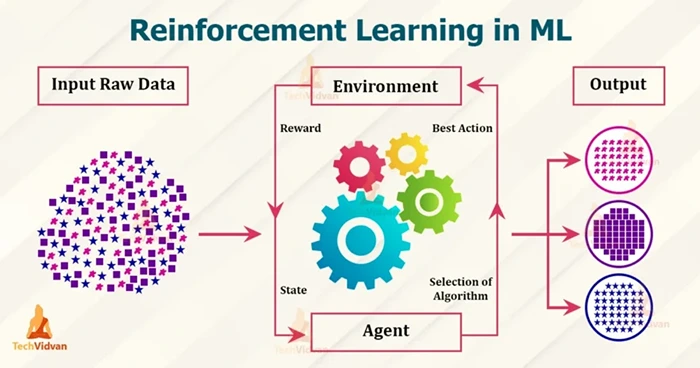
Image Source: TechVidvan
And if you’re using AI for web scraping? This is where things really get interesting.
Enter: AI-Powered Scraping
Conventional web scrapers operate according to a fixed script. They are inflexible: when a page layout changes, the script fails and the project stops. In contrast, AI-driven scraping tools are agile. They learn from new patterns, recognize altered tags or styles, adjust in real-time, and continue extracting data with little human intervention.
Such flexibility matters for firms that use crawlers to track rivals, gather price lists or monitor stock levels. The AI prevents the bot from freezing when a competitor redesigns its homepage or adds dynamic panels. Instead, it adapts on the fly and simply keeps moving.
The More It Sees, the Better It Gets
Here’s where it gets cool: every single dataset that AI processes makes it smarter. If it scrapes 10,000 product pages today and sees something new, it learns from it. Tomorrow, it’ll do better. This constant learning loop is what separates basic automation from intelligent systems.
It’s like training a super-efficient intern who never sleeps and keeps improving every time they look at a webpage.
Speed? It’s Not Even Close
Let’s face it, humans can’t read 500,000 web pages in an hour. AI can. It’s not just about volume, though; it’s the real-time processing that makes a difference. Imagine tracking market sentiment, product availability, or global pricing changes as they happen. That’s a major edge in industries like retail, finance, and market research.
To put it in perspective, by some estimates, over 90% of the world’s data was created in just the last few years. Without AI helping to make sense of that tsunami, most of it would be useless digital noise.
What Is AI Scraping (and How Is It Smarter Than Old-School Web Scraping)?
We’ve already covered how artificial intelligence learns by analyzing vast amounts of data, but what does that process look like in everyday work-horse tasks, collecting information from dozens of websites?
Web scraping has been around for a long time. At its simplest, a little program opens a webpage, grabs the sections a coder told it to, and then signs off. Straightforward, yes-until a tiny layout change or new security measure breaks the code.
Enter AI scraping, and the whole dynamic shifts.
Old-School Scraping vs. AI Scraping: What’s the Difference?
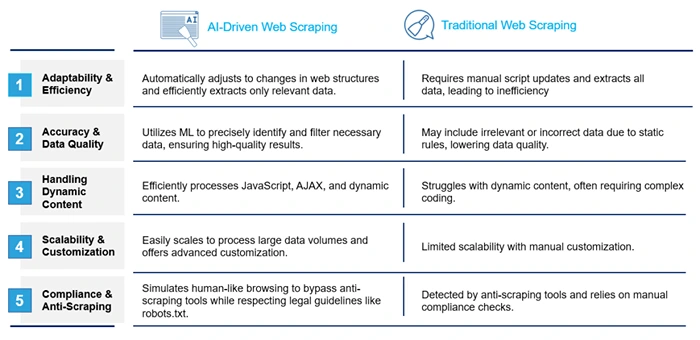
Image Source: Blackstrawai
Think of old-school scraping like a very literal assistant. You tell it, “Go to this site. Click here. Copy this bit of text.” It does exactly that, and only that. But if the website updates, maybe the layout changes or the content loads differently, it’s game over. You’ve got to re-code the scraper manually.
Now, imagine an AI-based scraper instead. It’s like having a smart assistant who gets it. You don’t have to micromanage. It can:
- Recognize when a page structure changes
- Figure out where the data has moved
- Keep extracting the right content, no babysitting needed
It uses machine learning to understand context and make decisions. So instead of breaking every time something shifts on a site, it adapts.
This is a huge deal for companies relying on website crawlers to track product listings, monitor news, analyze competitors, or pull customer reviews across thousands of pages daily.
AI Scraping Isn’t Just Smart, It’s Scalable
One of the biggest challenges in data extraction isn’t getting data from one site, it’s doing it across thousands, consistently, and at scale. AI scraping tools are designed for that.
They can crawl massive volumes of websites, detect patterns across different platforms, and even prioritize which pages to hit first based on what’s most relevant. That’s miles ahead of traditional scrapers.
Let’s say you’re tracking prices from 50 e-commerce platforms for a competitive pricing strategy. With a traditional scraper, you’d probably have to write and maintain 50 different scripts. But with an AI-powered website crawler from a solution like PromptCloud, the process is dynamic, automated, and constantly learning.
You don’t need a dev team working overtime every time something on a site changes.
It also Understands Content (Not Just HTML)
Another big edge AI scraping has? It understands the meaning behind content. Not just the code or where something is placed on a page.
Let’s say you want to scrape hotel reviews and figure out customer sentiment, and what people feel about the service. AI can do that. It can parse natural language, detect tone, and even highlight recurring complaints or praises. Traditional scrapers? They’ll just give you the raw text. You’ll have to figure out what it means on your own.
This ability to analyze and structure unstructured data is what makes AI and big data such a powerful duo.
Smarter Crawlers = Less Maintenance, More Value
We’ve seen this firsthand with companies using PromptCloud’s intelligent website crawler solutions. Instead of spending days maintaining scripts and troubleshooting breakages, teams can focus on using the data and feeding it into dashboards, models, and decision-making tools.
AI scraping frees you from the “plumbing” work of web data extraction. It gives you reliable, up-to-date, clean data without constant micromanagement.
Where AI-Powered Crawlers Make the Biggest Impact: Real-World Use Cases
So now that we know how AI scraping works and why it’s smarter than the old-school stuff, let’s talk about what really matters: how companies are using this in the real world.
Because let’s be honest: nobody’s investing in a flashy website crawler just for fun. Businesses want results. They want to extract data that drives decisions, gives them an edge, or saves a ton of time and money. And AI-powered crawlers are delivering exactly that.
Let’s look at where big data and AI are making the biggest waves.
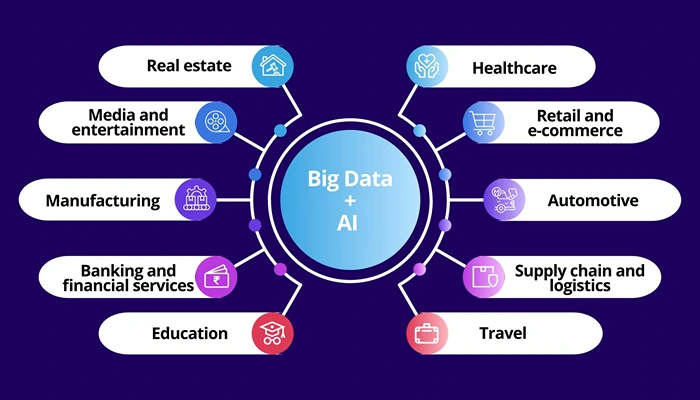
Image Source: Appventurez
Ecommerce: Price Monitoring and Product Intelligence
Ecommerce companies live and die by how well they understand the market. Prices fluctuate fast. Product availability changes by the hour. Reviews can make or break a product’s future.
That’s why online retailers and DTC brands are leaning hard on AI scraping to:
- Track competitor pricing across dozens (or hundreds) of websites in real time
- Monitor product descriptions and SEO shifts on competitor listings
- Gather customer sentiment from reviews to improve their own offerings
Instead of manually pulling product data, or paying teams to do it, they’re using intelligent website crawlers that adapt on the fly and deliver clean, structured data right into their systems.
We’ve seen some companies using PromptCloud’s solutions reduce time-to-insight from days to hours just by switching to AI-powered scraping.
Financial Services: Market Sentiment and News Monitoring
In finance, speed and accuracy are everything. Traders, analysts, and hedge funds rely on a constant stream of market data– from company news and regulatory changes to commodity prices and macroeconomic signals.
Here’s where AI and big data play a critical role:
- Crawlers can scan hundreds of financial news sources and forums in real time
- Natural Language Processing (NLP) can analyze sentiment in headlines or tweets
- Machine learning can spot patterns or red flags across datasets instantly
It’s no longer about waiting for Bloomberg to ping you with an update. With AI-powered scraping, financial firms are building their own intelligence pipelines to stay ahead of the market curve.
Travel and Hospitality: Review Mining and Dynamic Pricing
If you’ve booked a flight or hotel recently, you know how fast pricing and availability can shift. Behind the scenes, travel platforms are using website crawlers to:
- Monitor hotel listings, room rates, and flight prices from dozens of booking engines
- Analyze guest reviews to identify trends or service issues
- Keep their own pricing dynamic and competitive
One global travel aggregator we worked with used AI scraping to monitor 1,200+ hotel sites. The result? They caught underpriced listings before competitors and saw a 12% lift in conversions over a quarter. That’s the kind of outcome you get when your data infrastructure is truly intelligent.
Market Research and Consumer Insights
For research firms, it’s all about collecting data from everywhere, news, forums, social media, blogs, and product pages. Manually doing this? It’s impossible at scale.
With AI scraping, you can set crawlers to:
- Track discussions around certain brands or products
- Follow industry trends across multiple media outlets
- Structure data into clean dashboards for analysts to use
Whether it’s for a quarterly report or a client briefing, having reliable, always-fresh web data changes the game. You’re not just quoting numbers, you’re showing real-time consumer behavior.
Job Portals and HR Tech: Real-Time Listings and Skill Trends
The labor market never sits still. Occupations adapt, competencies expand, and fresh openings appear by the second.
Modern talent platforms rely on AI scraping to:
- Scan thousands of corporate career sites each day;
- Spot rising job titles and the skills they demand;
- Map hiring patterns by region, sector, or specific firm.
By building their own up-to-the-minute index, these services stay ahead of stale postings that plague older boards.
Why PromptCloud’s AI Scraping Solutions Stand Out in the Crowd
Web scraping tools are everywhere these days. A quick Google search and you’ll find everything from open-source scripts to SaaS platforms promising “easy data.” But most of those tools fall short the moment things get complicated, messy, or need to scale fast.
That’s where PromptCloud comes in.
We don’t just build scripts that extract web data; we build smart, adaptable, enterprise-grade data pipelines that run on AI and big data. And that difference? It’s exactly what separates us from a sea of one-size-fits-all solutions.
Here’s why businesses (from Fortune 500s to fast-moving startups) choose PromptCloud:
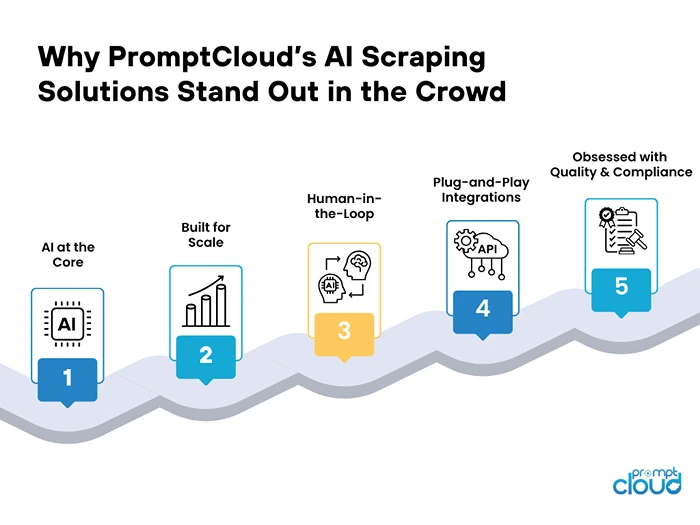
AI at the Core
We’ve baked machine learning and intelligent automation deep into our web scraping engine. That means our website crawlers don’t just follow static instructions; they learn, adapt, and self-correct when websites change.
Let’s say your data source updates its page layout (which happens more often than anyone likes to admit). With a traditional tool that breaks your pipeline. But with PromptCloud, our AI layer detects the shift, understands what’s changed, and updates the scraping logic automatically.
Less downtime. Less manual fixing. More clean data, right when you need it.
Built for Scale
Need to crawl 200 e-commerce websites daily? No problem. Want to track flight prices from 75 booking portals across 40 countries? We’ve done that too.
PromptCloud’s infrastructure is designed to handle scale, both in volume and complexity. Whether it’s structured product listings or chaotic forum chatter, our crawlers extract and normalize it, all with AI-powered precision.
We’re not here for hobbyists, we’re built for data-hungry teams who can’t afford half-broken scripts or stale information.
Human-in-the-Loop
Artificial intelligence streamlines data collection, but meaningful human supervision is still vital in fast-moving web spaces and whenever privacy rules come into play.
PromptCloud combines machine speed with seasoned analysts, striking a careful equilibrium between quick delivery and high fidelity. Our scraping engine manages routine requests, while our experts tackle tricky custom jobs, compliance checks, and rare exceptions. We call this hybrid approach human-in-the-loop intelligence, and it gives clients confidence that every dataset is dependable.
Plug-and-Play Integrations
Whether you want your data pushed into an S3 bucket, a Google Sheet, an API endpoint, or a data warehouse, PromptCloud makes that ridiculously easy. We meet you where your stack is, not the other way around.
And if you need to layer AI analytics or business intelligence dashboards on top of that? Even better. Our data is clean, structured, and ready for action.
Obsessed with Quality and Compliance
Let’s not skip the boring but important stuff: compliance, uptime, data hygiene. We know how critical those are, especially for clients in finance, healthcare, and other regulated industries.
PromptCloud follows strict protocols around ethical data scraping, legal compliance, and platform policies. We don’t cut corners, and that’s why our clients stick around.
PromptCloud isn’t just another scraper vendor. We’re your strategic partner in building AI-driven data infrastructure that actually works at scale, adapts in real time, and delivers data that’s clean, compliant, and useful.
Whether you’re trying to outpace your competitors in pricing, automate market intelligence, or fuel a machine-learning model with rich web data, our crawlers have you covered. Schedule a demo now!
FAQs
1. How does AI use big data in web scraping?
Picture AI as a really fast learner. Big data is the material it studies, millions of web pages, patterns, layouts, prices, reviews, all that stuff. The more it sees, the better it gets at figuring out what’s important and where to find it. When it’s scraping websites, it uses everything it’s learned to recognize what info to grab, even if the page looks totally different than the last one. It’s not just following rules, it’s thinking through them.
2. What’s the difference between a regular scraper and an AI-powered website crawler?
It’s the difference between someone reading off a script and someone who knows the job. A regular scraper follows a set of fixed instructions; if anything changes, even a little, it usually breaks. An AI-powered crawler doesn’t freak out when things shift. It notices changes, adjusts, and keeps going. You don’t have to jump in and fix it every time a website moves a button or renames a class.
3. Can AI scraping handle unstructured data like reviews or forum posts?
Totally, and that’s actually where AI really shines. Unstructured data, like a messy paragraph from a product review or a long post in a forum, is hard for basic tools to handle. But AI can read through it, understand the tone, figure out what’s being said, and even pick out trends. So you don’t just get a pile of random sentences, you get insights that actually mean something.
4. Is big data and AI just for large enterprises?
Nope. That used to be the case, but not anymore. Sure, big companies jumped on the train early because they had the budget for it. But today, there are tools and platforms (like PromptCloud) that make this stuff way more accessible. Whether you’re a startup, a small research team, or a mid-sized business trying to move fast, you can absolutely make AI and big data work for you.
5. What industries benefit the most from website crawling and AI scraping?
Honestly? Pretty much anyone who needs up-to-date info from the web. Retailers use it to track competitor prices. Travel platforms use it to pull real-time listings. Finance folks use it for market sentiment. Even HR tech companies use it to analyze job posts and hiring trends. If your work depends on web data, AI scraping can save you a ton of time and probably give you better data, too.










